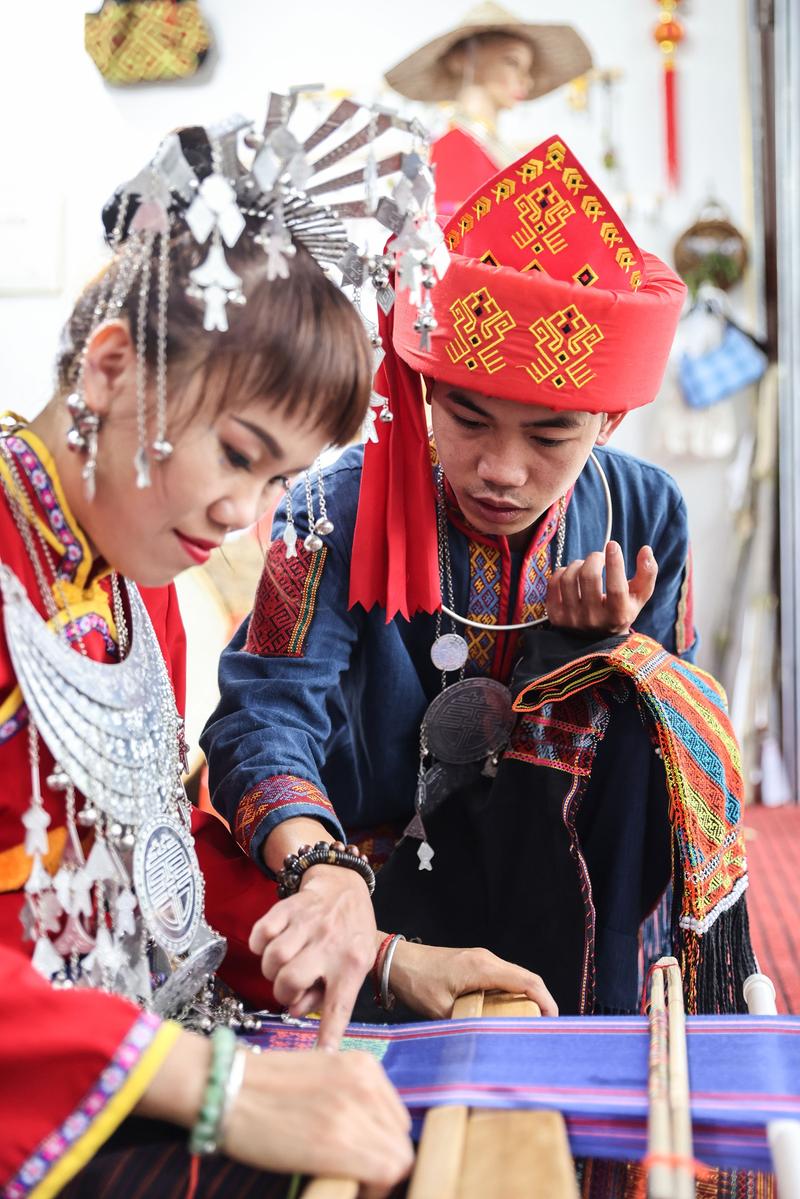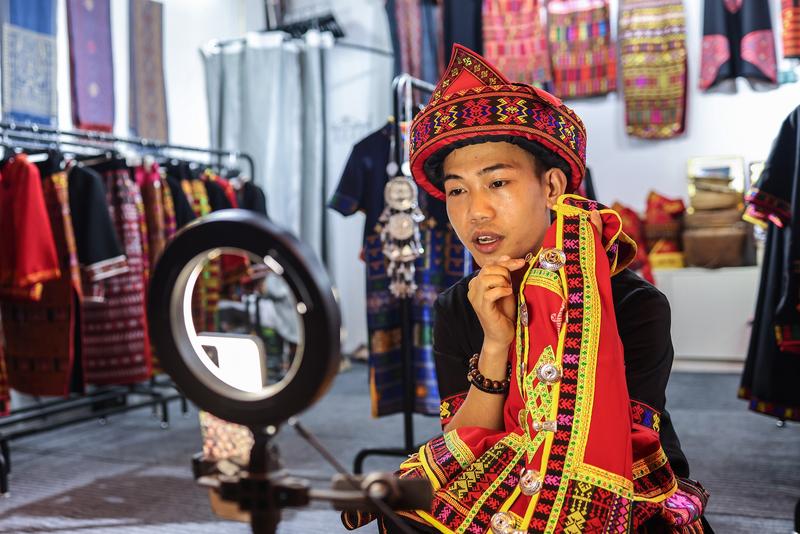 Huang Yangwei (right), owner of a Li brocade clothing store in Wuzhishan county, Hainan province, instructs a student. (ZHANG YUNLI / XINHUA)
Huang Yangwei (right), owner of a Li brocade clothing store in Wuzhishan county, Hainan province, instructs a student. (ZHANG YUNLI / XINHUA)
HAIKOU-During this year's Spring Festival holiday, Huang Yangwei's mother and elder sister were dressed in new clothes with an ethnic brocade he had woven for them.
"It's just beautiful," says Huang's sister. "I love it."
Huang, 24, is a native of Maodao township in Wuzhishan county, South China's Hainan province. Born into a family of the Li ethnic group, he was immersed in Li culture as a child, especially the ethnic brocade, which is famous for its bright, striking colors. But he had no idea how to weave it.
"My parents are lifetime farmers, and no one in the family really knew much about weaving the brocade," he says.
Huang did not know much about craftsmanship until he was in high school, when local authorities organized an event to introduce intangible cultural heritage to the school campus in 2016.
"I was fascinated instantly," he says.
Since then, he fell in love with Li brocade and became the only boy in his home village who can weave it.
"I developed a genuine and abiding love for the ethnic craft, but some villagers cannot understand why a man is addicted to weaving," he says. "They think it's a girl's thing." Undeterred, Huang continued chasing after his weaving dream.
The intangible cultural heritage of Li brocade can be traced back more than 3,000 years. In line with Li tradition, the weaving techniques are only "passed on to women, not to men", as in ancient China, men were supposed to do farm work while women were supposed to weave.
In recent years, Hainan education authorities have introduced the traditional craft in local schools, so that the younger generation can understand and learn about the ethnic culture.
 Huang during a livestreaming to sell his Li brocade clothing. (ZHANG YUNLI / XINHUA)
Huang during a livestreaming to sell his Li brocade clothing. (ZHANG YUNLI / XINHUA)
When Huang learned of the ancient craftsmanship in high school, he started weaving almost immediately.
"I gave my first handmade brocade piece to my mentor to express my gratitude for her guidance. It meant a lot to me," says Huang.
With great efforts, Huang made rapid progress and even won some awards in this field.
In 2019, he was admitted to a college in the provincial capital Haikou to study business administration. But his passion for Li brocade soared.
He kept practicing during his college years and tried to reinvent the traditional brocade patterns. For instance, the colors of traditional Li brocade are mainly red and black. Huang combined green, pink and yellow in the brocade to bring out better visual effects.
Currently, Huang is busy weaving a traditional dress for a customer from Harbin, capital of Heilongjiang province on the other end of the country. It is his first commercial order that he has spent over half a year on.
Huang cherishes every piece of Li brocade he weaves by hand. "My brocades are just like my own children," he says. He is reluctant to sell any of them, "unless the clients appreciate and understand the works and Li culture".
In June, Huang will graduate from college. He has opened a clothing store with his elder sister, Huang Xueling, in Wuzhishan.
"I hope he sticks to his passion and ignores what others say," says the sister.
This year, Huang plans to weave a shirt with a tiger pattern on it to celebrate the Year of the Tiger, and he dreams of traveling to different places to learn about weaving skills from different cultures.
"I hope I can bring Li ethnic culture to more parts of the world by weaving brocade," he says.


